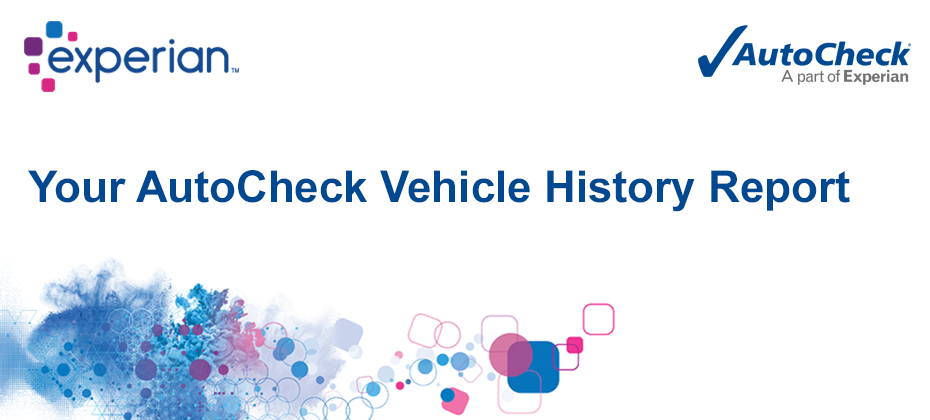Latest Posts

A closer look at the data shows GM’s losses might not be particularly significant, despite the announcement of discontinued models.

Perhaps more than ever before, technology is changing how companies operate, produce and deliver products and services to their customers. Similarly, technology is also driving a shift in customer expectation in how, when and where they consume products and services. But these changes aren’t just relegated to the arenas where tech giants with household names, like Amazon and Google, play. Likewise, financial institutions of every size are also fielding the changes brought on by innovations to the industry in recent years. According to this report by PWC, 77% of firms plan on dedicating time and budgets to increase innovation. But what areas make the most sense for your business? With a seemingly constant shift in consumer and corporate focus, it can be difficult to know which technological advancements are imperative to your company’s success and which are just the latest fizzling buzzword. As you evaluate innovation investments for your organization in 2019 and beyond, here’s a list of four technology innovations that are already changing the financial sector or will change the banking landscape in the near future. The APIs of Open Banking Ok, it’s not a singular innovation, so I’m cheating a bit here, but it’s a great place to begin the conversation because it comprises and sets the stage for many of the innovations and technologies that are in use today or will be implemented in the future. Created in 2015, the Open Banking Standard defined how a bank’s system data or consumer-permissioned financial data should be created, accessed and shared through the use of application programming interfaces or APIs. When financial institutions open their systems up to third-party developer partners, they can respond to the global trends driving change within the industry while greatly improving the customer experience. With the ability to securely share their financial data with other lenders, greater transparency into the banking process, and more opportunities to compare product offerings, consumers get the frictionless experience they’ve come to expect in just about every aspect of life – just not necessarily one that lenders are known for. But the benefits of open banking are not solely consumer-centric. Financial institutions are able to digitize their product offerings and thus expand their market and more easily share data with partners, all while meeting clients’ individualized needs in the most cost-effective way. Biometrically speaking…and smiling Verifying the identity of a customer is perhaps one of the most fundamental elements to a financial transaction. This ‘Know Your Customer’ (KYC) process is integral to preventing fraud, identity theft, money laundering, etc., but it’s also time-consuming and inconvenient to customers. Technology is changing that. From thumbprint and, now, facial recognition through Apple Pay, consumers have been using biometrics to engage with and authorize financial transactions for some time now. As such, the use of biometrics to authenticate identity and remove friction from the financial process is becoming more mainstream, moving from smartphones to more direct interaction. Chase has now implemented voice biometrics to verify a consumer’s identity in customer service situations, allowing the company to more quickly meet a customer’s needs. Meanwhile, in the US and Europe, Visa is testing biometric credit cards that have a fingerprint reader embedded in the card that stores his or her fingerprint in order to authenticate their identity during a financial transaction. In China, companies like Alipay are taking this to the next level by allowing customers to bypass the phone entirely with its ‘pay with a smile’ service. First launched in KFC restaurants in China, the service is now being offered at hospitals as well. How, when and where a consumer accesses their financial institution data actually creates a digital fingerprint that can be verified. While facial and vocal matching are key components to identity verification and protecting the consumer, behavioral biometrics have also become an important part of the fraud prevention arsenal for many financial institutions. These are key components of Experian’s CrossCore solution, the first open fraud and identity platform partners with a variety of companies, through open APIs discussed above. Not so New Kid on the Block(chain) The first Bitcoin transaction took place on January 12, 2009. And for a number of years, all was quiet. Then in 2017, Bitcoin started to blow up, creating a scene reminiscent of the 1850s California gold rush. Growing at a seemingly exponential rate, the cryptocurrency topped out at a per unit price of more than $20,000. By design cryptocurrencies are decentralized, meaning they are not controlled or regulated by a single entity, reducing the need for central third-party institutions, i.e. banks and other financial institutions to function as central authorities of trust. Volatility and regulation aside, it’s understandable why financial institutions were uneasy, if not skeptical of the innovation. But perhaps the most unique characteristic of cryptocurrencies is the technology on which they are built: blockchain. Essentially, a blockchain is just a special kind of database. The database stores, validates, transfers and keeps a ledger of transfers of encrypted data—records of financial transfers in the case of Bitcoin. But these records aren’t stored on one computer as is the case with traditional databases. Blockchain leverages a distributed ledger or distributed trust approach where a full copy of the database is stored across many distributed processing nodes and the system is constantly checking and validating the contents of the database. But a blockchain can store any type of data, making it useful in a wide variety of applications including tracking the ownership digital or physical assets or the provenance of documents, etc. From clearing and settlements, payments, trade finance, identity and fraud prevention, we’re already seeing financial institutions explore and/or utilize the technology. Santander was the first UK bank to utilize blockchain for their international payments app One Pay FX. Similarly, other banks and industry groups are forming consortiums to test the technology for other various uses. With all this activity, it’s clear that blockchain will become an integral part of financial institutions technology and operations on some level in the coming years. Robot Uprising Rise in Robots While Artificial Intelligence seems to have only recently crept into pop-culture and business vernacular, it was actually coined in 1956 by John McCarthy, a researcher at Dartmouth who thought that any aspect of learning or intelligence could essentially be taught to a machine. AI allows machines to learn from experience, adjust to new inputs and carry out human-like tasks. It’s the result of becoming ‘human-like’ or the potential to become superior to humans that creeps out people like my father, and also worries others like Elon Musk. Doomsday scenarios a la Terminator aside, it’s easy to see how the tech can and is useful to society. In fact, much of the AI development done today uses human-style reasoning as a model, but not necessarily the ultimate aim, to deliver better products and services. It’s this subset of AI, machine learning, that allows companies like Amazon to provide everything from services like automatic encryption in AWS to products like Amazon Echo. While it’s much more complex, a simple way to think about AI is that it functions like billions of conditional if-then-else statements working in a random, varied environment typically towards a set goal. Whereas in the past, programmers would have to code these statements and input reference data themselves, machine learning systems learn, modify and map between inputs and outputs to create new actions based on their learning. It works by combining the large amounts of data created on a daily basis with fast, iterative processing and intelligent algorithms, allowing the program to learn from patterns in the data and make decisions. It’s this type of machine learning that banks are already using to automate routine, rule-based tasks like fraud monitoring and also drive the analytical environments used in their risk modeling and other predictive analytics. Whether or not you’ve implemented AI, machine learning or bot technology into your operations, it’s highly likely your customers are already leveraging AI in their home lives, with smart home devices like Amazon Echo and Google Home. Conversational AI is the next juncture in how people interface with each other, companies and life in general. We’re already seeing previews of what’s possible with technologies like Google Duplex. This has huge implication for the financial services industry, from removing friction at a transaction level to creating a stickier, more engaging customer experience. To that end, according to this report from Accenture, AI may begin to provide in-the-moment, holistic financial advice that is in a customer’s best interest. It goes without saying that the market will continue to evolve, competition will only grow more fierce, consumer expectation will continue to shift, and regulation will likely become more complex. It’s clear technology can be a mitigating factor, even a competitive differentiator, with these changing industry variables. Financial institutions must evolve corporate mindsets in their approach to prioritize innovations that will have the greatest enterprise-wide impact. By putting together an intelligent mix of people, process, and the right technology, financial institutions can better predict consumer need and expectation while modernizing their business models.

Alternative credit data and trended data each have advantages to lenders and financial institutions. Is there such a thing as the MVD (Most Valuable Data)? Get Started Today When it comes to the big game, we can all agree the score is the last thing standing; however, how the two teams arrived at that score is arguably the more important part of the story. The same goes for consumers’ credit scores. The teams’ past records and highlight reels give insight into their actual past performance, while game day factors beyond the stat sheets – think weather, injury rehab and personal lives – also play a part. Similarly, consumers’ credit scores according to the traditional credit file may be the dependable source for determining credit worthiness. But, while the traditional credit file is extensive, there is a playbook of other, additional information you can arm yourself with for easier, faster and better lending decisions. We’ve outlined what you need to create a win-win data strategy: Alternative credit data and trended data each have unique advantages over traditional credit data for both lenders and consumers alike. How do you formulate a winning strategy? By making sure you have both powerhouses on your roster. The results? Better than that game-winning touchdown and hoisting the trophy above your head – universe expansion and the ability to lend deeper. Get Started Today

Are You #TeamTrended or #TeamAlternative? There’s no such thing as too much data, but when put head to head, differences between the data sets are apparent. Which team are you on? Here’s what we know: With the entry and incorporation of alternative credit data into the data arena, traditional credit data is no longer the sole determinant for credit worthiness, granting more people credit access. Built for the factors influencing financial health today, alternative credit data essentially fills the gaps of the traditional credit file, including alternative financial services data, rental payments, asset ownership, utility payments, full file public records, and consumer-permissioned data – all FCRA-regulated data. Watch this video to see more: Trended data, on the other hand shows actual, historical credit data. It provides key balance and payment data for the previous 24 months to allow lenders to leverage behavior trends to determine how individuals are utilizing their credit. Different splices of that information reveal particular behavior patterns, empowering lenders to then act on that behavior. Insights include a consumer’s spend on all general purpose credit and charge cards and predictive metrics that identify consumers who will be in the market for a specific type of credit product. In the head-to-head between alternative credit data and trended data, both have clear advantages. You need both on your roster to supplement traditional credit data and elevate your game to the next level when it comes to your data universe. Compared to the traditional credit file, alternative credit data can reveal information differentiating two consumers. In the examples below, both consumers have moderate limits and have making timely credit card payments according to their traditional credit reports. However, alternative data gives insight into their alternative financial services information. In Example 1, Robert Smith is currently past due on his personal loan, whereas Michelle Lee in Example 2 is current on her personal loan, indicating she may be the consumer with stronger creditworthiness. Similarly, trended data reveals that all credit scores are not created equal. Here is an example of how trended data can differentiate two consumers with the same score. Different historical trends can show completely different trajectories between seemingly similar consumers. While the traditional credit score is a reliable indication of a consumer’s creditworthiness, it does not offer the full picture. What insights are you missing out on? Go to Infographic Get Started Today

Experian Boost gives consumers greater control over their credit profiles by allowing them to add non-traditional credit information to their Experian credit file.

From the time we wake up to the minute our head hits the pillow, we make about 35,000 conscious and unconscious decisions a day. That’s a lot of processing in a 24-hour period. As part of that process, some decisions are intuitive: we’ve been in a situation before and know what to expect. Our minds make shortcuts to save time for the tasks that take a lot more brainpower. As for new decisions, it might take some time to adjust, weigh all the information and decide on a course of action. But after the new situation presents itself over and over again, it becomes easier and easier to process. Similarly, using traditional data is intuitive. Lenders have been using the same types of data in consumer credit worthiness decisions for decades. Throwing in a new data asset might take some getting used to. For those who are wondering whether to use alternative credit data, specifically alternative financial services (AFS) data, here are some facts to make that decision easier. In a recent webinar, Experian’s Vice President of Analytics, Michele Raneri, and Data Scientist, Clara Gharibian, shed some light on AFS data from the leading source in this data asset, Clarity Services. Here are some insights and takeaways from that event. What is Alternative Financial Services? A financial service provided outside of traditional banking institutions which include online and storefront, short-term unsecured, short-term installment, marketplace, car title and rent-to-own. As part of the digital age, many non-traditional loans are also moving online where consumers can access credit with a few clicks on a website or in an app. AFS data provides insight into each segment of thick to thin-file credit history of consumers. This data set, which holds information on more than 62 million consumers nationwide, is also meaningful and predictive, which is a direct answer to lenders who are looking for more information on the consumer. In fact, in a recent State of Alternative Credit Data whitepaper, Experian found that 60 percent of lenders report that they decline more than 5 percent of applications because they have insufficient information to make a loan decision. The implications of having more information on that 5 percent would make a measurable impact to the lender and consumer. AFS data is also meaningful and predictive. For example, inquiry data is useful in that it provides insight into the alternative financial services industry. There are also more stability indicators in this data such as number of employers, unique home phone, and zip codes. These interaction points indicate the stability or volatility of a consumer which may be helpful in decision making during the underwriting stage. AFS consumers tend to be younger and less likely to be married compared to the U.S. average and traditional credit data on File OneSM . These consumers also tend to have lower VantageScore® credit scores, lower debt, higher bad rates and much lower spend. These statistics lend themselves to seeing the emerging consumer; millennials, immigrants with little to no credit history and also those who may have been subprime or near prime consumers who are demonstrating better credit management. There also may be older consumers who may have not engaged in traditional credit history in a while or those who have hit a major life circumstance who had nowhere else to turn. Still others who have turned to nontraditional lending may have preferred the experience of online lending and did not realize that many of these trades do not impact their traditional credit file. Regardless of their individual circumstances, consumers who leverage alternative financial services have historically had one thing in common: their performance in these products did nothing to further their access to traditional, and often lower cost, sources of credit. Through Experian’s acquisition and integration of Clarity Services, the nation’s largest alternative finance credit bureau, lenders can gain access to powerful and predictive supplemental credit data that better detect risk while benefiting consumers with a more complete credit history. Alternative finance data can be used across the lending cycle from prospecting to decisioning and account review to collections. Alternative data gives lenders an expanded view of consumer behavior which enables more complete and confident lending decisions. Find out more about Experian’s alternative credit data: www.experian.com/alternativedata.

We’ve popped the bottles at midnight, now it’s time to burst the reality bubble. Countdown: t-minus less than 90 days until what is for many the dreaded April 15 tax deadline. Tax Season - Get Started Coupled with debt consolidation post-holidays, January is a harsh contrast to all the feasting and festivities of the holiday season. However, the tax season doesn’t necessarily have to be synonymous with doom and gloom – many Americans look forward to receiving a tax refund. And of those people expecting a tax refund, 35% of consumers said they would use it to pay down debt, according to the National Retail Federation. Lenders and financial institutions can help their consumers get off on the right financial foot for 2019 by helping them to pay down their debt. Here are 5 tools you need to have this tax season to make the most of your collections efforts: 1. Identify your target market – Tax Season Payment IndicatorTM Did you know the average tax refund in 2016 and 2017 was over $2,760, according to the IRS? Also, during the 2017 tax season, 45 million consumers paid at least $500 and 10% or more of a tradeline balance(s), according to Experian data. Tax Season Payment Indicator examines payment behavior over the past two years to determine whether a consumer has made a large payment to a tradeline balance – or balances – during tax season. 2. Keep up-to-date on consumer information – Clear ProfileTM Skip tracing just got easier. Narrow in on the right contact information for your past-due consumer using Clear Profile. Leveraging Clarity Service’s database, Clear Profile provides the most recent and historical demographic elements associated with your consumer’s previous applications including addresses, phone numbers, employers, emails and banks. 3. Know the right time to collect – Collection TriggersSM Take the guesswork out of how to manage your collections efforts. Track your accounts to notify you of a new contact information and changes that indicate your past-due consumers’ ability to pay. 4. Stay ahead of fraudsters – CrossCoreTM Fraudsters are everywhere, so protect your customers and your organization by monitoring your portfolio to keep fraudulent accounts from being opened. Still wondering how to get tax season ready? Get Your Collections Tax Season Ready

With scarce resources and limited experience available in the data science field, a majority of organizations are partnering with outside firms to fill gaps within their teams. A report compiled by Hexa Research found that the data analytics outsourcing market is set to expand at a compound annual growth rate of 30 percent between 2016 and 2024, reaching annual revenues of more than $6 billion. With data science becoming a necessity for success, outsourcing these specific skills will be the way of the future. When working with outside firms, you may be given the option between offshore and onshore resources. But how do you decide? Let’s discuss a few things you can consider. Offshore A well-known benefit of using offshore resources is lower cost. Offshore resources provide a larger pool of talent, which includes those who have specific analytical skills that are becoming rare in North America. By partnering with outside firms, you also expose your organization to global best practices by learning from external resources who have worked in different industries and locations. If a partner is investing research and development dollars into specific data science technology or new analytics innovations, you can use this knowledge and apply it to your business. With every benefit, however, there are challenges. Time zone differences and language barriers are things to consider if you’re working on a project that requires a large amount of collaboration with your existing team. Security issues need to be addressed differently when using offshore resources. Lastly, reputational risk also can be a concern for your organization. In certain cases, there may be a negative perception — both internally and externally — of moving jobs offshore, so it’s important to consider this before deciding. Onshore While offshore resources can save your organization money, there are many benefits to hiring onshore analytical resources. Many large projects require cross-functional collaboration. If collaboration is key to the projects you’re managing, onshore resources can more easily blend with your existing resources because of time zone similarities, reduced communication barriers and stronger cultural fit into your organization. In the financial services industry, there also are regulatory guidelines to consider. Offshore resources often may have the skills you’re looking for but don’t have a complete understanding of our regulatory landscape, which can lead to larger problems in the future. Hiring resources with this type of knowledge will help you conduct the analysis in a compliant manner and reduce your overall risk. All of the above Many of our clients — and we ourselves — find that an all-of-the-above approach is both effective and efficient. In certain situations, some timeline reductions can be made by having both onshore and offshore resources working on a project. Teams can include up to three different groups: Local resources who are closest to the client and the problem Resources in a nearby foreign country whose time zone overlaps with that of the local resources More analytical team members around the world whose tasks are accomplished somewhat more independently Carefully focusing on how the partnership works and how the external resources are managed is even more important than where they are located. Read 5 Secrets to Outsourcing Data Science Successfully to help you manage your relationship with your external partner. If your next project calls for experienced data scientists, Experian® can help. Our Analytics on DemandTM service provides senior-level analysts, either offshore or onshore, who can help with analytical data science and modeling work for your organization.

2019 is here — with new technology, new regulations and new opportunities on the docket. What does that mean for the financial services space? Here are the five trends you should keep your eye on and how these affect your credit universe. 1. Credit access is at an all-time high With 121 million Americans categorized as credit-challenged (subprime scores and a thin or nonexistent credit file) and 45 million considered credit-invisible (no credit history), the credit access many consumers take for granted has appeared elusive to others. Until now. The recent launch of Experian BoostTM empowers consumers to improve their credit instantly using payment history from their utility and phone bills, giving them more control over their credit scores and making them more visible to lenders and financial institutions. This means more opportunities for more people. Coupled with alternative credit data, which includes alternative financial services data, rental payments, and full-file public records, lenders and financial institutions can see a whole new universe. In 2019, inclusion is key when it comes to universe expansion goals. Both alternative credit and consumer-permissioned data will continue to be an important part of the conversation. 2. Machine learning for the masses The financial services industry has long been notorious for being founded on arguably antiquated systems and steeped in compliance and regulations. But the industry’s recent speed of disruption, including drastic changes fueled by technology and innovation, may suggest a changing of the guard. Digital transformation is an industry hot topic, but defining what that is — and navigating legacy systems — can be challenging. Successfully integrating innovation is the convergence at the center of the Venn diagram of strategy, technology and operations. The key, according to Deloitte, is getting “a better handle on data to extract the greatest value from technology investments.” How do you get the most value? Risk managers need big data, machine learning and artificial intelligence strategies to deliver market insights and risk evaluation. Between the difficulty of leveraging data sets and significant investment in time and money, it’s impossible for many to justify. To combat this challenge, the availability and access to an analytical sandbox (which contains depersonalized consumer data and comparative industry intel) is crucial to better serve clients and act on opportunities in lenders’ credit universe and beyond. “Making information analysis easily accessible also creates distinct competitive advantages,” said Vijay Mehta, Chief Innovation Officer for Experian’s Consumer Information Services, in a recent article for BAI Banking Strategies. “Identifying shifts in markets, changes in regulations or unexpected demand allows for quick course corrections. Tightening the analytic life cycle permits organizations to reach new markets and quickly respond to competitor moves.” This year is about meaningful metrics for action, not just data visualization. 3. How to fit into the digital-first ecosystem With so many things available on demand, the need for instant gratification continues to skyrocket. It’s no secret that the financial services industry needs to compete for attention across consumers’ multiple screens and hours of screen time. What’s in the queue for 2019? Personalization, digitalization and monetization. Consumers’ top banking priorities include customized solutions, omnichannel experience improvement and enhancing the mobile channel (as in, can we “Amazonize” everything?). Financial services leaders’ priorities include some of the same things, such as enhancing the mobile channel and delivering options to customize consumer solutions (BAI Banking Strategies). From geolocation targeting to microinteractions in the user experience journey to leveraging new strategies and consumer data to send personalized credit offers, there’s no shortage of need for consumer hyper-relevance. 33 percent of consumers who abandon business relationships do so because personalization is lacking, according to Accenture data for The Financial Brand. This expectation spans all channels, emphasizing the need for a seamless experience across all devices. 4. Keeping fraudsters out Many IT professionals regard biometric authentication as the most secure authentication method currently available. We see this technology on our personal devices, and many companies have implemented it as well. Biometric hacking is among the predicted threats for 2019, according to Experian’s Data Breach Industry Forecast, released last month. “Sensors can be manipulated and spoofed or deteriorate with too much use. ... Expect hackers to take advantage of not only the flaws found in biometric authentication hardware and devices, but also the collection and storage of data,” according to the report. 5. Regulatory changes and continued trends Under the Trump Administration, the regulatory front has been relatively quiet. But according to the Wall Street Journal, as Democrats gain control of the House of Representatives, lawmakers may be setting their sights on the financial services industry — specifically on legislation in response to the credit data breach in 2017. The Democratic Party leadership has indicated that the House Financial Services Committee will be focused on protecting consumers and investors, preserving sector stability, and encouraging responsible innovation in financial technology, according to Deloitte. In other news, the focus on improving accuracy in data reporting, transparency for consumers in credit scoring and other automated decisions can be expected to continue. Consumer compliance, and specifically the fair and responsible treatment of consumers, will remain a top priority. For all your needs in 2019 and beyond, Experian has you covered. Learn more

Today, we’re excited to announce that AutoCheck® has received a facelift! AutoCheck has always been the industrial strength Vehicle History Report that automotive professionals trust to help manage risk and confidently buy and sell the right vehicles. We’ve made this great tool even greater by adding more data and accident insights than ever before and improving the user experience by making it easier to read across all mobile devices. Among the data and insights updated within AutoCheck: Updated display of how buyback protection details are presented Vehicle ownership history presentation Vehicle use history details Updated accident and damage check sections Updated display of how title brand information is displayed Updated odometer check Open safety recall information, inspection, service and repair history checks Based on extensive research, we’ve added many visual changes which make it easier for dealers and cars shoppers to understand and use the full report. One noticeable change is the addition of the Experian logo and color scheme. Experian continues to invest significantly in building a widely recognized and trusted brand. Reinforcing that AutoCheck is backed by Experian’s rich data and industry expertise will resonate with consumers as they look for a trusted source to confidently move along their vehicle shopping journey. The AutoCheck Score® has a new visualization, designed after an automotive-themed gauge to illustrate if the vehicle’s AutoCheck Score is below, within or above the score range for similar vehicles. Making the score easier to use and understand will help consumers better compare their vehicle to other similar vehicles currently in the market. We’ve also made the report easier to use and access for both consumers and dealers. AutoCheck is now optimized for tablet and mobile users, providing even more shopping convenience for users. As always, dealers can access the new report via AutoCheck Fast Link℠ for their online vehicle listings and through multiple integrations within their DMS or inventory management solution. The report will still be available directly from AutoCheck.com for consumers and AutoCheck.com/members for dealers. In addition, the report is available through most dealer platforms and all premier consumer automotive portals. Check out the full report redesign changes, updates and some additional highlights below. Updated AutoCheck® Buyback Protection Information As always, AutoCheck will buy back your vehicle if your AutoCheck report fails to list certain title brands available to Experian at the time the report was issued. Items impacting Buyback protection are now grouped together, so users can clearly see what data impacts Buyback qualification. Items that do not impact Buyback are captured in other areas of the report. Buyback Protection badging for eligible clients displays on the first page as well as in the specific State Title Brand section if the vehicle is, or is not, Buyback protected. NEW: Owner History AutoCheck now displays information for the current, last and previous vehicle ownership. The report will now highlight the year and state the vehicle was purchased from as well as the ownership date ranges and length of ownership. NEW: Vehicle Usage AutoCheck now clearly highlights the historical usage activity level for the vehicle, whether it was used as Personal, Fleet, Rental, Lease, Taxi, Livery, Police, Government, Drivers Ed and/or Commercial. NEW: Damage Check Section We have added a new Damage Check section to more clearly illustrate the historical activity for the vehicle. The Damage Check section will highlight damage records from auctions, salvage, or independent sources such as recycling and crash tests. We will continue to offer the Accident Check section, which highlights accident dates and location from government sources and independent agencies. The Damage Check section will highlight damage records from auctions, salvage auctions or independent sources such as recycling and crash tests. Other Title Brand and Specific Event check: Other title brands that are not included in Buyback protection qualification will be listed here. In addition, event activity such as theft and insurance loss is also included in this section. UPDATED: Odometer Check We have combined information to provide one place for all odometer related history checks. State title odometer check reflects all odometer related brands from the state such as Exceeds Mechanical Limits (EML), Not Actual Mileage (NAM) and Broken Odometer (BRK). Auction odometer check are the odometer brands either reported to auctions or upon inspection in auction announcements. The odometer calculation check is Experian’s proprietary odometer sequence calculation to determine if there are any potential discrepancies. NEW: ‘Check’ sections: To highlight specific data for easier reference and understanding, we have added an open safety recall check, Inspection history check, and service and repair history check section. What do all these changes mean for dealers and their customers? They have an easier-to-use AutoCheck VHR with more comprehensive information than ever. For dealers, it will help with their buying decisions at auction or on trade-ins. For consumers, it provides even more peace of mind when making a used vehicle purchase decision. Ultimately, it improves the shopping process for everyone involved and can help dealers develop even stronger relationships with their customers. Want to learn even more about AutoCheck? Visit our site for more details: https://www.experian.com/lp/automotive/autocheck-dealer-lp

Auto dealers need to move their dealerships forward through hyper-local advertising that helps them connect with the right audiences at the right time.

With the new year just days behind us, and as the uptick in holiday spending comes back down, debt consolidation will take precedence along with the making (and breaking) of new year’s resolutions. Personal loans were the fastest growing unsecured lending product for much of last year. From debt consolidation to major purchases, consumers are increasingly choosing these flexible, easy-access loans over credit cards throughout the course of the year. Recent Experian research highlighted the trends around this fast-paced lending product: Previously, while industry experts had predicted a leveling off of personal loans originations, Experian data shows steady growth. Additionally, there were 35.7 million personal loan trades in the second quarter, the highest number to date since Q1 of 2007. What is driving this growth? Observations suggest growth trends across the industry as a whole – not just in the personal loans segment. And the numbers prove it. Growth is occurring across the board. Experian statistics show: Consumer confidence is up 5.6% year over year Investor confidence remains high – up 18% year over year since 1987 Unemployment remains low and continued decrease is forecasted in the near future With increased confidence and increased spending often comes increased personal loans. More financial institutions are bringing personal loans under their roofs. As many consumers enter each new year as part of a “debt consolidation nation” per se, focus for many will be on personal loans as they seek to consolidate revolving debt. Since this is a known trend, lenders across the board – from traditional financial institutions to fintechs – need to be strategic with their marketing efforts in order to reach the right consumers with the right products at the right time. Consumers consider important factors in choosing the lender(s) for their personal loans including interest rate and the ability to apply online among others. These factors see differences across generations as well. These factors and others should influence lenders’ marketing strategies, on top of their best practices. Experian partnered with Mintel Group for their insights on the 2019 trends and best practices for digital credit marketing. Register for our upcoming webinar to learn more about Digital Credit Marketing 2019 Trends and Best Practices. Register for the Webinar

Subprime originations hit the lowest overall share of the market seen in 11 years, but does that mean people are being locked out car ownership? Not necessarily, according to the Q3 State of the Automotive Finance Market report.To gain accurate insights from the vast amount of data available, it’s important to look at the entire picture that is created by the data. The decrease in subprime originations is due to many factors, one of which being that credit scores are increasing across the board (average is now 717 for new and 661 for used), which naturally shifts more consumers into the higher credit tiers. Loan origination market share are just one of the trends seen in this quarter’s report. Ultimately, examining the data can help inform lenders and help them make the right lending decisions. Exploring options for affordability While consumers analyze different possibilities to ensure their monthly payments are affordable, leasing is one of the more reasonable options in terms of monthly payments. In fact, the difference between the average new lease payment and new car payment usually averages more $100—and sometimes well over—which is a significant amount for the average American budget. In fact, leases of new vehicles are hovering around 30 percent, which is one of the factors that is aiding in new car sales. In turn, this then helps the used-vehicle market, as the high number of leases create a larger supply of quality use vehicles when they come off-lease and make their way back into the market. On-time payments continue to improve As consumer preferences continue to trend towards more expensive vehicles, such as crossovers, SUVs, and pickups, affordability will continue to be a topic of discussion. But consumers appear to be managing the higher prices, as in addition to the tactics mentioned above, 30- and 60-day delinquency rates declined since Q3 2017, from 2.39 percent to 2.23 percent and 0.76 percent to 0.72 percent, respectively. The automotive finance market is one where the old saying “no news is good news” continues to remain true. While there aren’t significant changes in the numbers quarter over quarter, this signals that the market is at a good place in its cycle. To learn more about the State of the Automotive Finance Market report, or to watch the webinar, click here.

What if you had an opportunity to boost your credit score with a snap of your fingers? With the announcement of Experian BoostTM, this will soon be the new reality. As part of an increasingly customizable and instant consumer reality in the marketplace, Experian is innovating in the space of credit to allow consumers to contribute information to their credit profiles via access to their online bank accounts. For decades, Experian has been a leader in educating consumers on credit: what goes into a credit score, how to raise it and how to maintain it. Now, as part of our mission to be the consumer’s bureau, Experian is ushering in a new age of consumer empowerment with Boost. Through an already established and full-fledged suite of consumer products, Experian Boost is the next generation offering a free online platform that places the control in the consumers’ hands to influence their credit scores. The platform will feature a sign-in verification, during which consumers grant read-only permission for Experian Boost to connect to their online bank accounts to identify utility and telecommunications payments. After they verify their data and confirm that they want the account information added to their credit file, consumers will receive an instant updated FICO® Score. The history behind credit information spans several centuries from a group of London tailors swapping information on customers to keeping credit files on index cards being read out to subscribers over the telephone. Even with the evolution of the credit industry being very much in the digital age today, Experian Boost is a significant step forward for a credit bureau. This new capability educates the consumer on what types of payment behavior impacts their credit score while also empowering them to add information to change it. This is a big win-win for consumers and lenders alike. As Experian is taking the next big step as a traditional credit bureau, adding these data sources is a new and innovative way to help consumers gain access to the quality credit they deserve as well as promoting fair and responsible lending to the industry. Early analysis of Experian’s Boost impact on the U.S. consumer credit scores showed promising results. Here’s a snapshot of some of those findings: These statistics provide an encouraging vision into the future for all consumers, especially for those who have a limited credit history. The benefit to lenders in adding these new data points will be a more complete view on the consumer to make more informed lending decisions. Only positive payment histories will be collected through the platform and consumers can elect to remove the new data at any time. Experian Boost will be available to all credit active adults in early 2019, but consumers can visit www.experian.com/boost now to register for early access. By signing up for a free Experian membership, consumers will receive a free credit report immediately, and will be one of the first to experience the new platform. Experian Boost will apply to most leading consumer credit scores used by lenders. To learn more about the platform visit www.experian.com/boost.

“We don’t know what we don’t know.” It’s a truth that seems to be on the minds of just about every financial institution these days. The market, not-to-mention the customer base, seems to be evolving more quickly now than ever before. Mergers, acquisitions and partnerships, along with new competitors entering the space, are a daily headline. Customers expect the same seamless user experience and instant gratification they’ve come to expect from companies like Amazon in just about every interaction they have, including with their financial institutions. Broadly, financial institutions have been slow to respond both in the products they offer their customers and prospects, and in how they present those products. Not surprisingly, only 26% of customers feel like their financial institutions understand and appreciate their needs. So, it’s not hard to see why there might be uncertainty as to how a financial institution should respond or what they should do next. But what if you could know what you don’t know about your customer and industry data? Sound too good to be true? It’s not—it’s exactly what Experian’s Ascend Analytical Sandbox was built to do. “At OneMain we’ve used Sandbox for a lot of exploratory analysis and feature development,” said Ryland Ely, a modeler at Experian partner client, OneMain Financial and a Sandbox user. For example, “we’ve used a loan amount model built on Sandbox data to try and flag applications where we might be comfortable with the assigned risk grade but we’re concerned we might be extending too much or too little credit,” he said. The first product built on Experian’s big data platform, Ascend, the Analytical Sandbox is an analytics environment that can have enterprise-wide impact. It provides users instant access to near real-time customer data, actionable analytics and intelligence tools, along with a network of industry and support experts to drive the most value out of their data and analytics. Developed with scalability, flexibility, efficiency and security at top-of-mind, the Sandbox is a hybrid-cloud system that leverages the high availability and security of Amazon Web Services. This eliminates the need, time and infrastructure costs associated with creating an internally hosted environment. Additionally, our web-based interface speeds access to data and tools in your dedicated Sandbox all behind the protection of Experian’s firewall. In addition to being supported by a revolutionized tech stack backed by an $825 million annual investment, Sandbox enables use of industry-leading business intelligence tools like SAS, RStudio, H2O, Python, Hue and Tableau. Where the Ascend Sandbox really shines is in the amount and quality of the data that’s put into it. As the largest, global information services provider, the Sandbox brings the full power of Experian’s 17+ years of full-file historical tradeline data, boasting a data accuracy rate of 99.9%. The Sandbox also allows users the option to incorporate additional data sets including commercial small business data and soon real estate data, among others. Alternative data assets add to the 50 million consumers who use some sort of financial service, in addition to rental and utility payments. In addition to including Experian’s data on the 220+ million credit-active consumers, small business and other data sets, the Sandbox also allows companies to integrate their own customer data into the system. All data is depersonalized and pinned to allow companies to fully leverage the value of Experian’s patented attributes and scores and models. Ascend Sandbox allows companies to mine the data for business intelligence to define strategy and translate those findings into data visualizations to communicate and win buy-in throughout their organization. But here is where customers are really identifying the value in this big data solution, taking those business intelligence insights and being able to take the resulting models and strategies from the Sandbox directly into a production environment. After all, amassing data is worthless unless you’re able to use it. That’s why 15 of the top financial institutions globally are using the Experian Ascend Sandbox for more than just benchmarking and data visualization but also risk modeling, score migration, share of wallet, market entry, cross-sell and much more. Moreover, clients are seeing time-savings, deeper insights and reduced compliance concerns as a result of consolidating their production data and development platform inside Sandbox. “Sandbox is often presented as a tool for visualization or reporting, sort of creating summary statistics of what’s going on in the market. But as a modeler, my perspective is that it has application beyond just those things,” said Ely. To learn more about the Experian Ascend Analytical Sandbox and hear more about how OneMain Financial is getting value out of the Sandbox, watch this on-demand webinar.